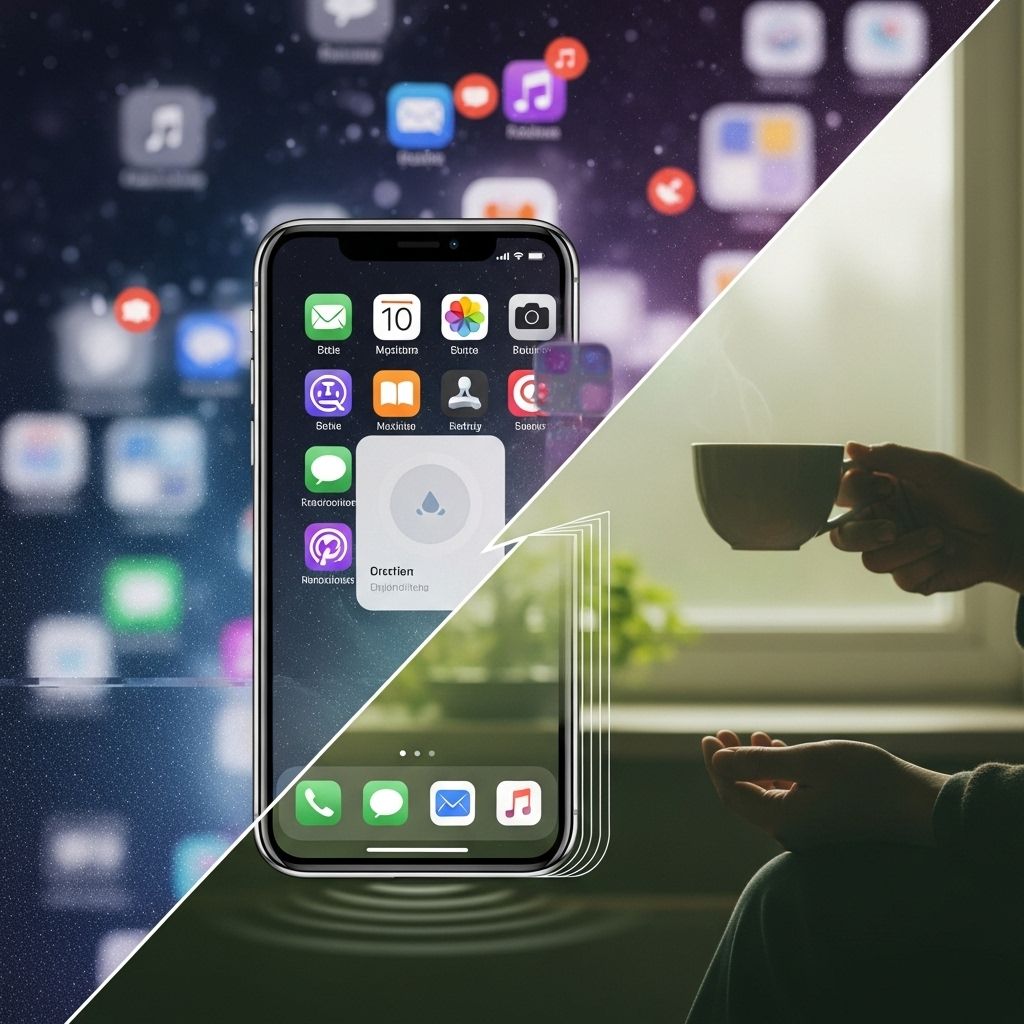Intentional Friction Efficacy on Digital Devices
Small design hurdles can transform device routines into moments of conscious choice.

Table of Content
- Introduction
- Intentional Friction: Concept and Theoretical Underpinnings
- Applying Intentional Friction on Digital Devices
- Psychological and Behavioral Benefits
- Implementation Examples
- Frequently Asked Questions (FAQs)
Introduction
In the digital age, where efficiency and convenience often come at the cost of mindfulness, the concept of intentional friction offers a compelling solution. Intentional friction involves introducing controlled resistance into digital experiences to encourage more thoughtful engagement and decision-making. This approach is grounded in behavioral science and cognitive psychology, positing that strategic barriers can enhance user agency and prevent impulsive actions. In this article, we delve into the efficacy of intentional friction on digital devices, exploring its conceptual foundations, practical applications, and the psychological and behavioral benefits it offers.
Intentional Friction: Concept and Theoretical Underpinnings
Intentional friction is a design intervention that deliberately introduces resistance into a system or process. This concept challenges the traditional engineering goal of minimizing all impediments, instead arguing that strategically applied difficulty can optimize decision-making, augment security, and foster pro-social behaviors. The theoretical underpinnings of intentional friction are rooted in dual-process theories of cognition, notably System 1 (automatic, heuristic-driven) and System 2 (effortful, analytical) thinking, as described by Daniel Kahneman. Intentional friction acts as a cognitive ‘tripwire,’ disrupting System 1 automaticity and activating System 2 engagement, thereby promoting more reflective and considered actions.
Key Components of Intentional Friction
- Deliberate Resistance: Intentionally placing barriers or challenges in the user’s path to encourage more thoughtful engagement.
- Reflective Cognition: Encouraging users to engage in reflective thinking rather than automatic responses.
- Behavioral Outcomes: Influencing user behavior to align with long-term goals or societal benefits.
Applying Intentional Friction on Digital Devices
The application of intentional friction on digital devices is particularly relevant in today’s hyper-connected world. By adding small barriers or extra steps before engaging in specific actions, users can be prompted to reassess their choices. For instance, moving an app icon to a secondary screen or requiring a password to access certain services can create a momentary pause, allowing users to reflect on their actions.
Examples of Intentional Friction in Digital Devices
- Delayed Access: Implementing time delays or requiring additional steps before accessing frequently used apps can reduce mindless scrolling.
- Physical Distance: Placing devices in less accessible locations can reduce the frequency of use.
- Frictional Design: Incorporating design elements that require users to pause and consider their actions, such as confirmation screens before purchases.
Psychological and Behavioral Benefits
Intentional friction offers several psychological and behavioral benefits, particularly in preventing impulsive actions and fostering more mindful engagement with digital devices. By creating a momentary pause, users are prompted to engage their analytical thinking, leading to better decision-making and reduced regret. Moreover, intentional friction can combat phenomena like present bias, where immediate gratification often overrides future benefits, by providing space for reflection and reassessment.
Addressing Common Challenges
One of the challenges in applying intentional friction is balancing the need for efficiency with the desire for mindfulness. However, by strategically integrating friction, users can achieve a more balanced digital experience that aligns with their long-term goals.
Implementation Examples
Implementing intentional friction can be tailored to individual needs and goals. Here are some examples of how intentional friction can be applied in daily life:
– Phone Use Reduction: Charging phones outside the bedroom to reduce pre-sleep usage.- App Management: Relocating app icons to less accessible locations or using password protection to limit access.- Sustainable Practices: Adding a rubber band around paper towels to interrupt automatic use and encourage reflection.
Frequently Asked Questions (FAQs)
Q: What is intentional friction?
A: Intentional friction refers to the deliberate introduction of resistance into a system or process to encourage more thoughtful engagement and decision-making.
Q: How does intentional friction benefit users?
A: It helps users engage in more reflective thinking, prevent impulsive actions, and align their digital behaviors with long-term goals and values.
Q: Can intentional friction be applied to other areas of life?
A: Yes, intentional friction can be applied beyond digital devices to promote mindful engagement in various aspects of life, such as reducing consumption habits or improving physical activity.
References
- https://lifestyle.sustainability-directory.com/term/intentional-friction/
- https://www.breakthetwitch.com/intentional-friction/
- https://www.jonesandpalmer.co.uk/the-lab/friction-is-the-new-ux
- https://bluetriangle.com/blog/can-friction-serve-a-useful-purpose
- https://humanebydesign.com/principles/intentional
- https://app.uxcel.com/tutorials/turning-friction-into-positive-experiences-in-ux-design-lesson-uxcel-002
- https://corporate.visa.com/en/sites/visa-perspectives/security-trust/the-right-kind-of-friction.html
Read full bio of Sneha Tete












